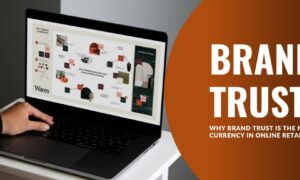Whether you want to search for a new job, start a business, or just build a better reputation for yourself in your industry, a personal brand can help. But many professionals are reluctant to start personal branding because they don’t understand it or because they don’t know what it takes to get started.
Fortunately, creating a personal brand is relatively easy if you’re willing to invest the time. In just five steps, you can professionally redefine yourself – and open up a world of new possibilities.
Step One: Do Your Research
Start by doing some research. It’s important to understand the fundamentals of personal branding (in greater detail than a single article can provide), the competitive landscape, and the most important elements of your own professional image.
Resources like the Personal Branding Blog exist to provide this type of information; even a few hours of reading their material can help you become adept in personal branding.
Step Two: Define Yourself
Next, you’ll need to figure out how you want to define yourself. Certain elements of your personal brand are already in place; you are who you are. But other elements will require some modification, some tweaking, and some definition from scratch.
Consider:
- Expertise. What makes you an expert in this field? Are you a specialist in a specific area, or are you trying to market yourself as a generalist?
- Education. Where did you go to school? What kind of classes have you taken, and what certifications do you have?
- Experience. How much experience do you have in this field? Don’t think just in terms of years, either; think about the kinds of clients you’ve worked for, the industries to which you’ve been exposed, and the key challenges you’ve overcome.
- Personality and voice. Who are you and why are you unique? What is it about your voice that other job candidates or other professionals won’t be able to replicate? Think about your most unique features and consider playing them up for your audience.
- Target audience. Speaking of audiences, who is your target audience? Who are you trying to reach with your personal branding efforts? A bit of market research can go a long way here.
- Other key differentiators. An important key to successful personal branding is finding a way to differentiate yourself from others. So what other factors make you a unique candidate in this field?
Step Three: Build a Portfolio
After that, you’ll be ready to start building a portfolio. Your portfolio should be a collection of work that shows off your capabilities. If you’re an artist, a photographer, a writer, or some other creative type, this should be relatively easy; just put together an assortment of your best pieces. If you provide services rather than physical goods (e.g., if you’re a consultant), this may be harder. Consider listing your successes instead. Ideally, you’ll include this portfolio on a personal website.
Step Four: Create Content
After that, you’ll need to start creating content. The more authoritative and influential your content is, the bigger and more influential your personal brand will become.
These are some of the most common ways to do it:
- Blog posts. Blog posts are easy, quick, and cheap to create. And if you already have expertise in a subject, you can simply spill your thoughts onto the page. Just make sure you’re saying something both original and useful.
- Whitepapers. If you want to go more in-depth, you can create whitepapers as well. Do your research and make sure you can substantiate all your claims here.
- Podcasts. If you’re more about audio content, consider starting your own podcast. You can go on extended monologues or interview other guests when broadcasting to your audience. You can learn how to start a podcast today.
- Videos. If you have the right equipment, you can even produce your own videos.
Step Five: Build Your Network
With all these other elements in place, you’ll be able to start building your professional network. Start attending local meetups and networking events, join groups on social media, and reach out to new people on social media. The more active you are, and the more you genuinely engage with other people, the bigger your following will grow. Large followings carry at least some clout with employers – and every new connection in your network is another potential job opportunity.
Ongoing: Keep Experimenting and Growing
You can create the start of your personal brand in the course of a weekend, but if you want to keep benefitting from your personal brand, you’ll need to work on it on an ongoing basis. That means experimenting with new types of content, updating your portfolio and resume, and expanding your network further. The more you put in, the more you’ll get out of it.



































